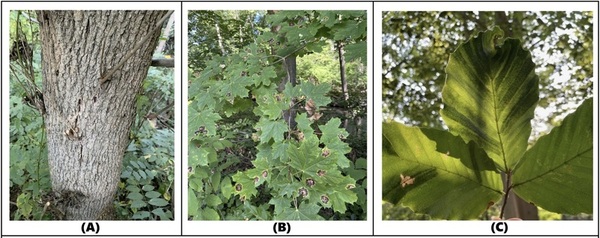Redefining and advancing tree disease diagnosis through VOC emission measurements
(1) The Masters School, (2) Department of Anesthesia and Critical Care, MSKCC
https://doi.org/10.59720/24-200
In the United States, 25% of tree loss is due to infestations and disease. Pesticidal treatments can save trees during early stages of infestation, which is a challenge because symptoms appear late. Previous studies evaluated the potential of volatile organic compound (VOC) emissions as an early infestation detection method, currently limited by expensive technology that cannot be used on a widespread scale. We hypothesized that an affordable and accessible Adafruit SGP40 gas sensor can detect differences between VOC emissions of diseased and non-diseased trees for ash and beech trees, but not for maple trees, since the maple tar spot disease does not harm the health of the tree. Bark VOCs of 19 non-infested ash and 15 infested ash were measured, revealing statistically significant differences between those categories (p < 0.05). Leaf VOC emissions of 40 American beech and 40 Norway maple were studied in the field. We compared the emissions of symptomatic leaves from diseased trees with asymptomatic leaves from diseased trees and leaves from non-diseased trees. For both beech and maple, we found statistically significant differences between the VOC emissions of leaves from diseased and non-diseased trees. These promising results indicate this affordable gas sensor could be used for early detection of multiple tree diseases. Future research should validate the results using a larger sample size, include a larger diversity of locations, and apply the sensor to other tree diseases.
This article has been tagged with: